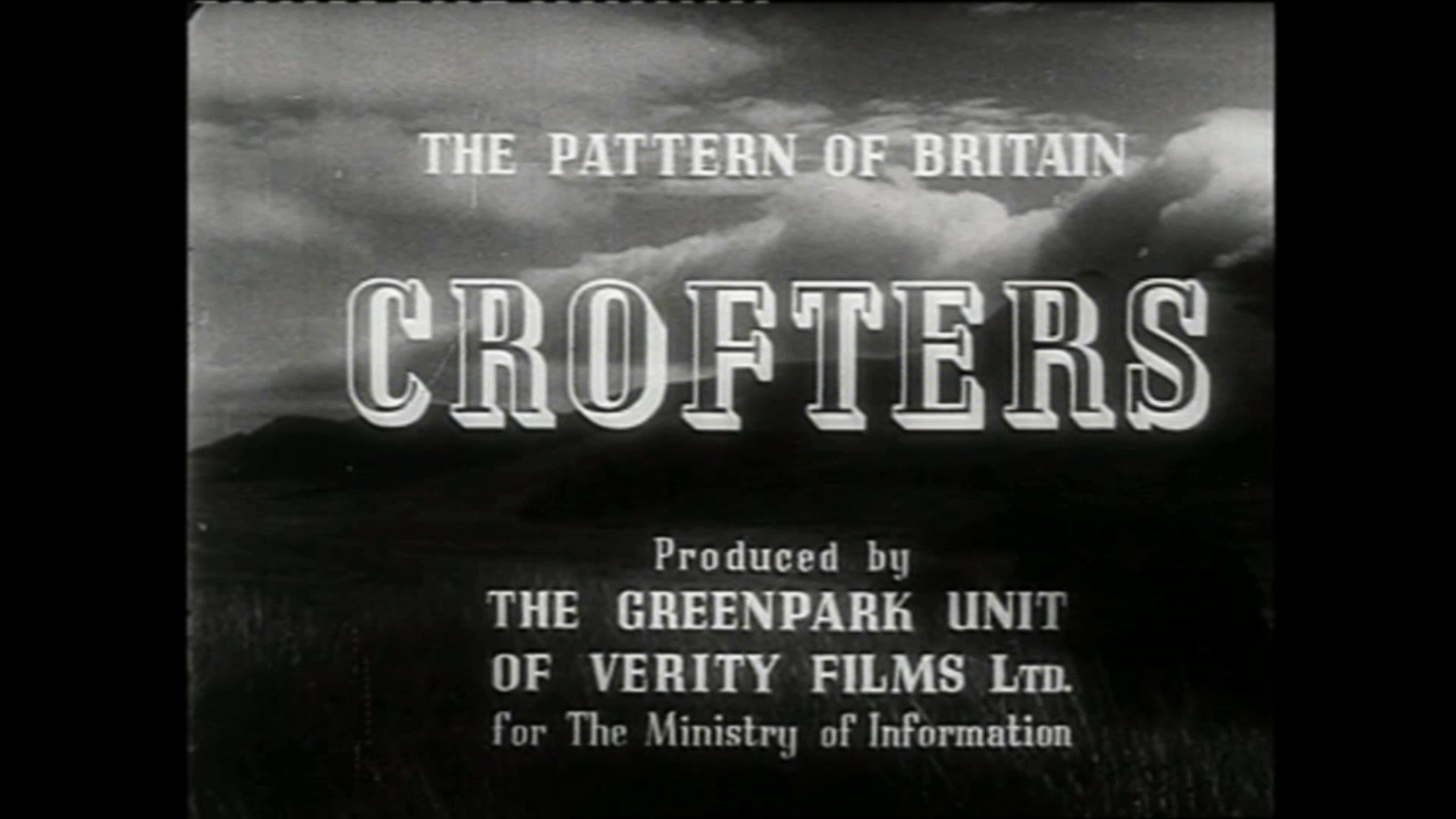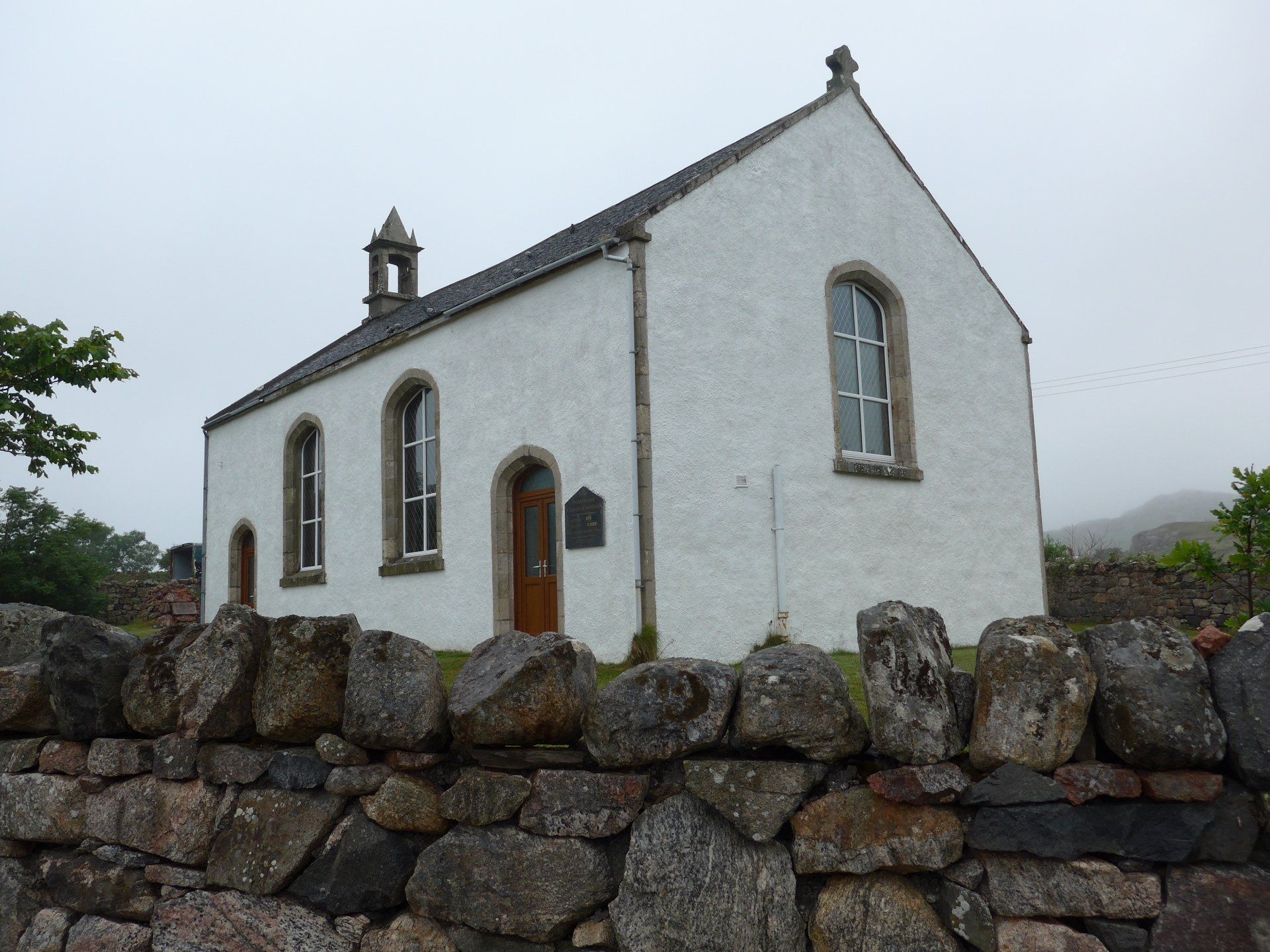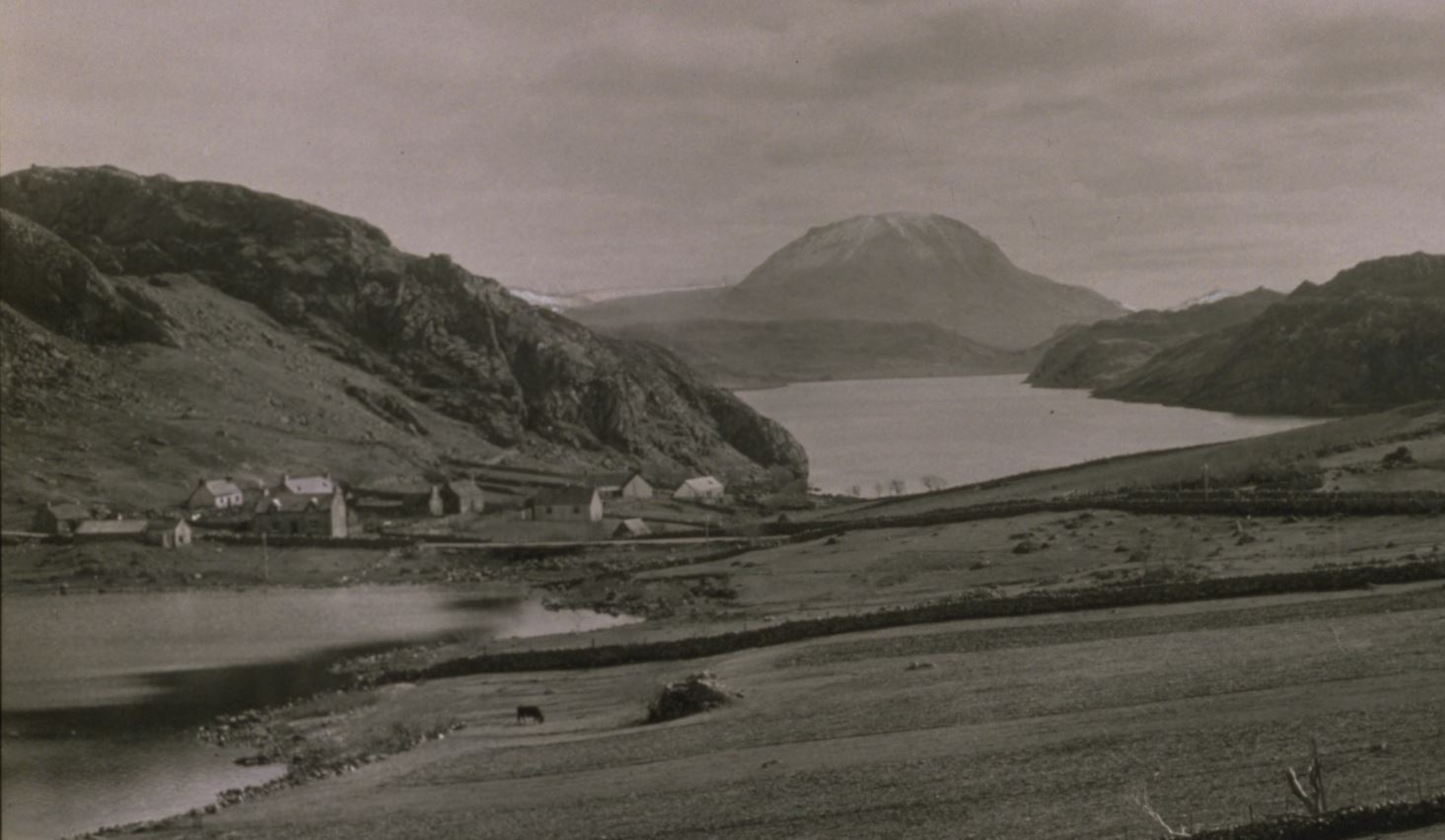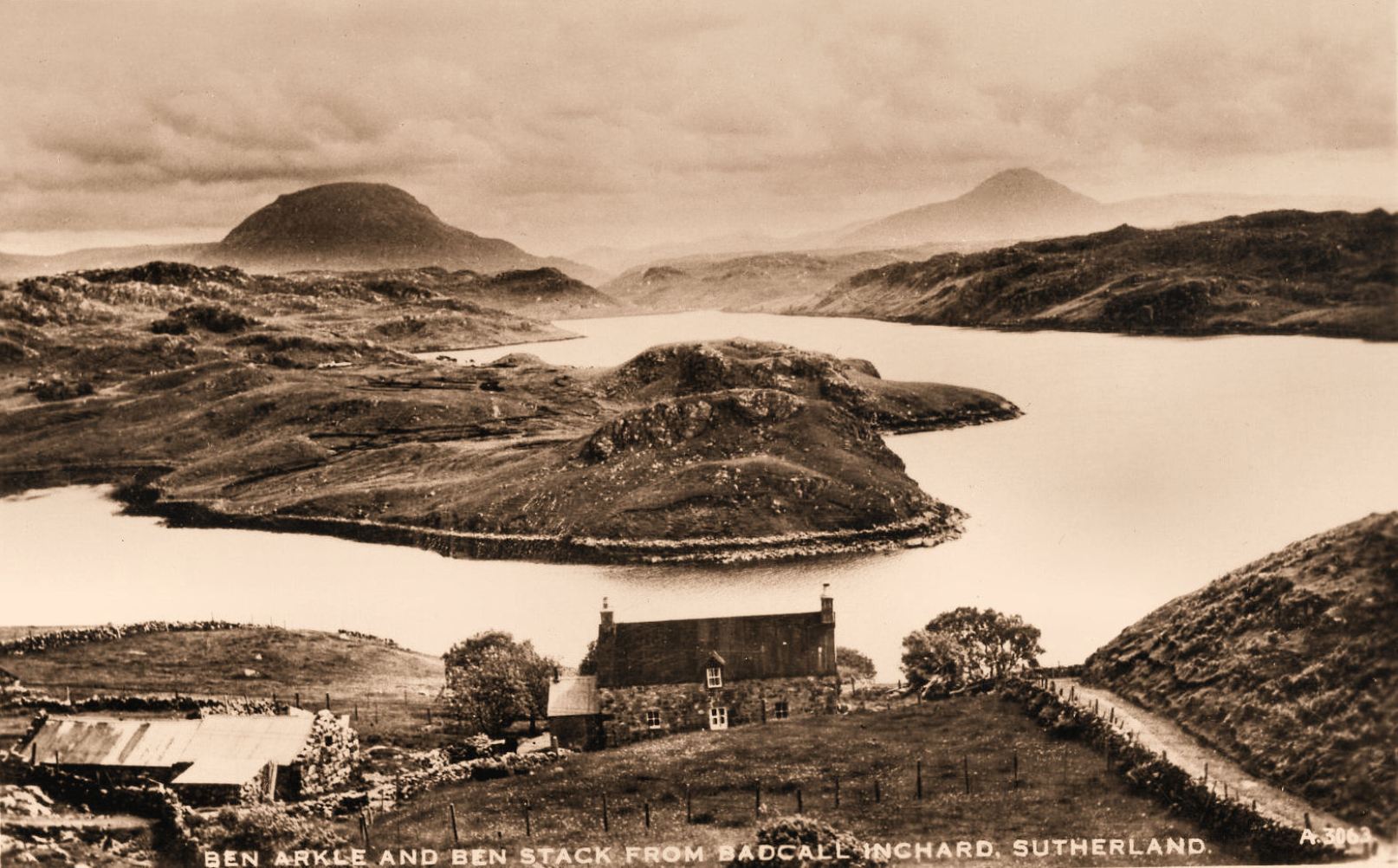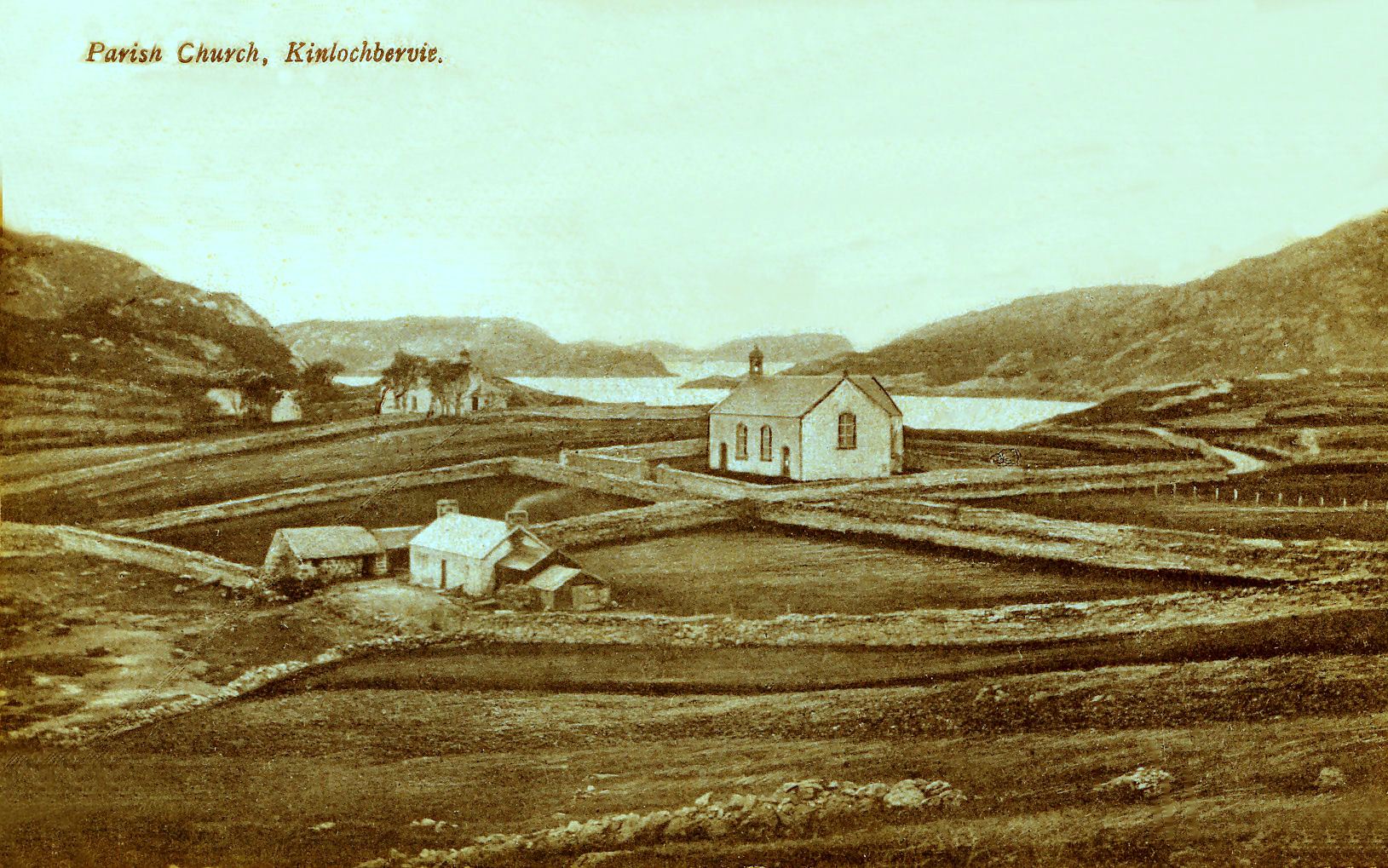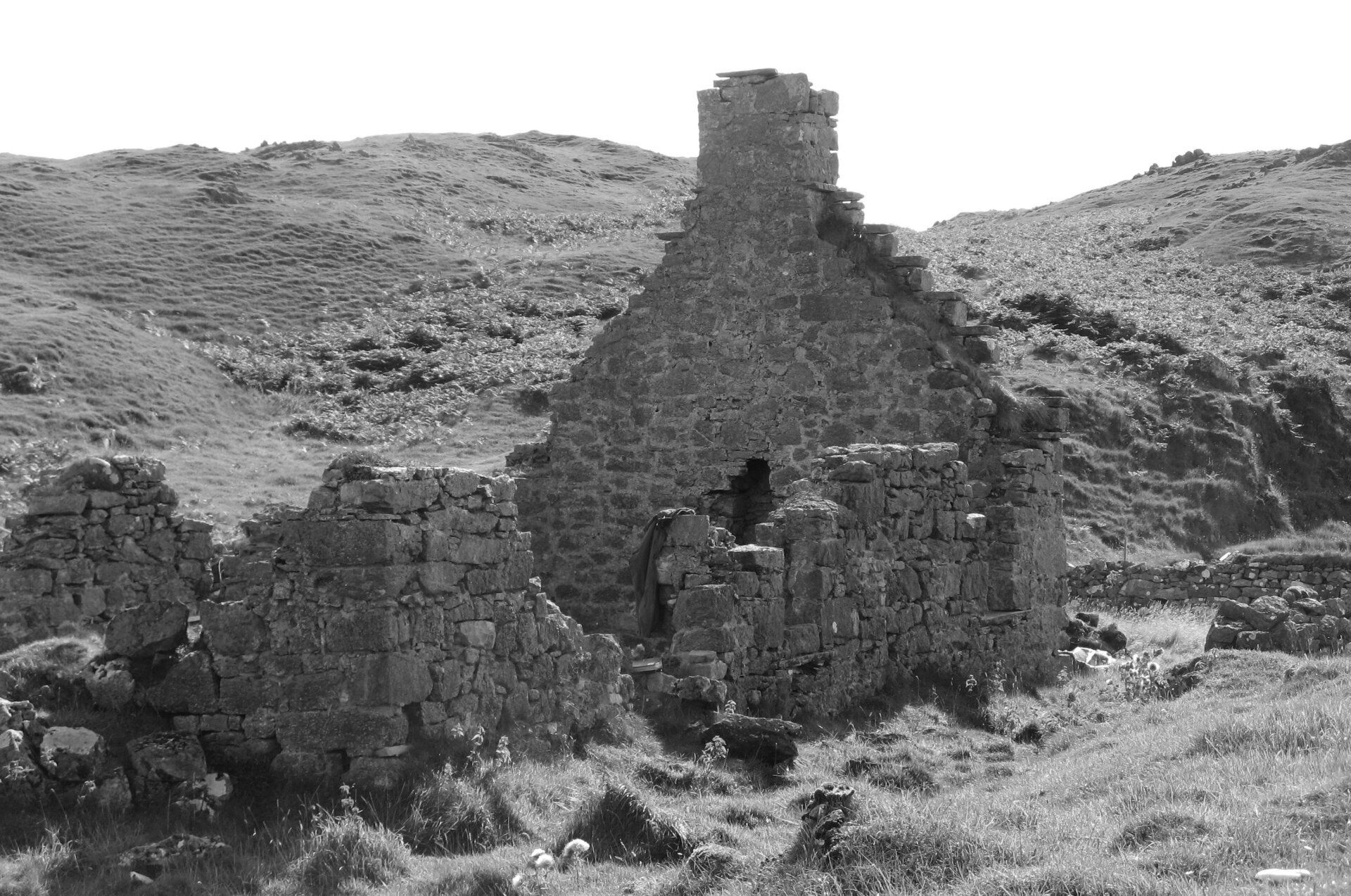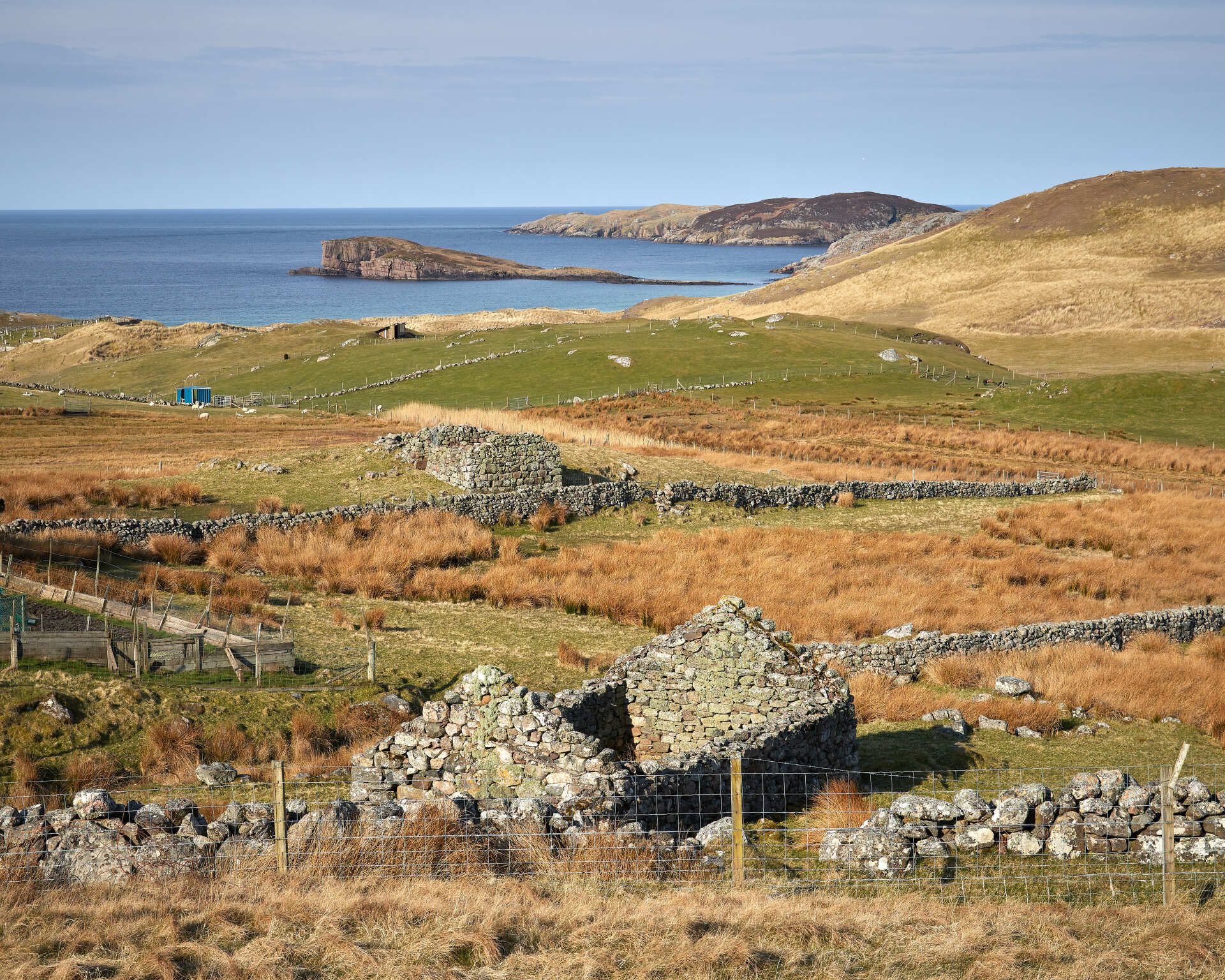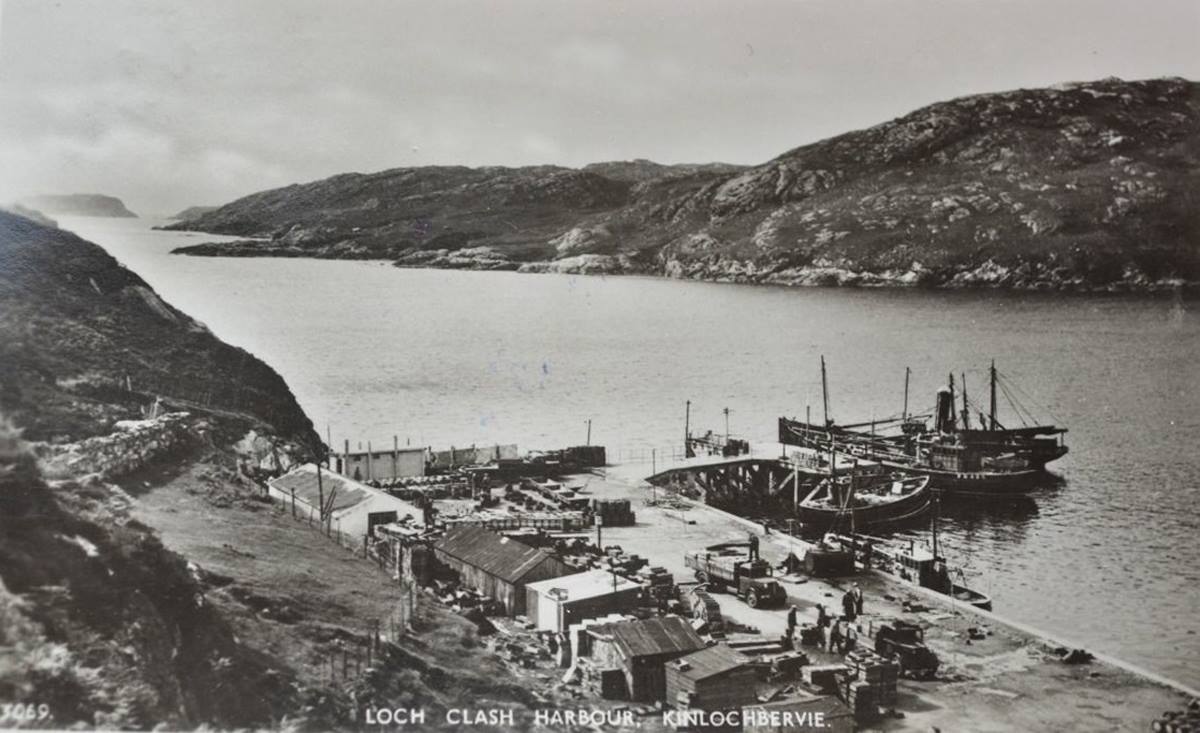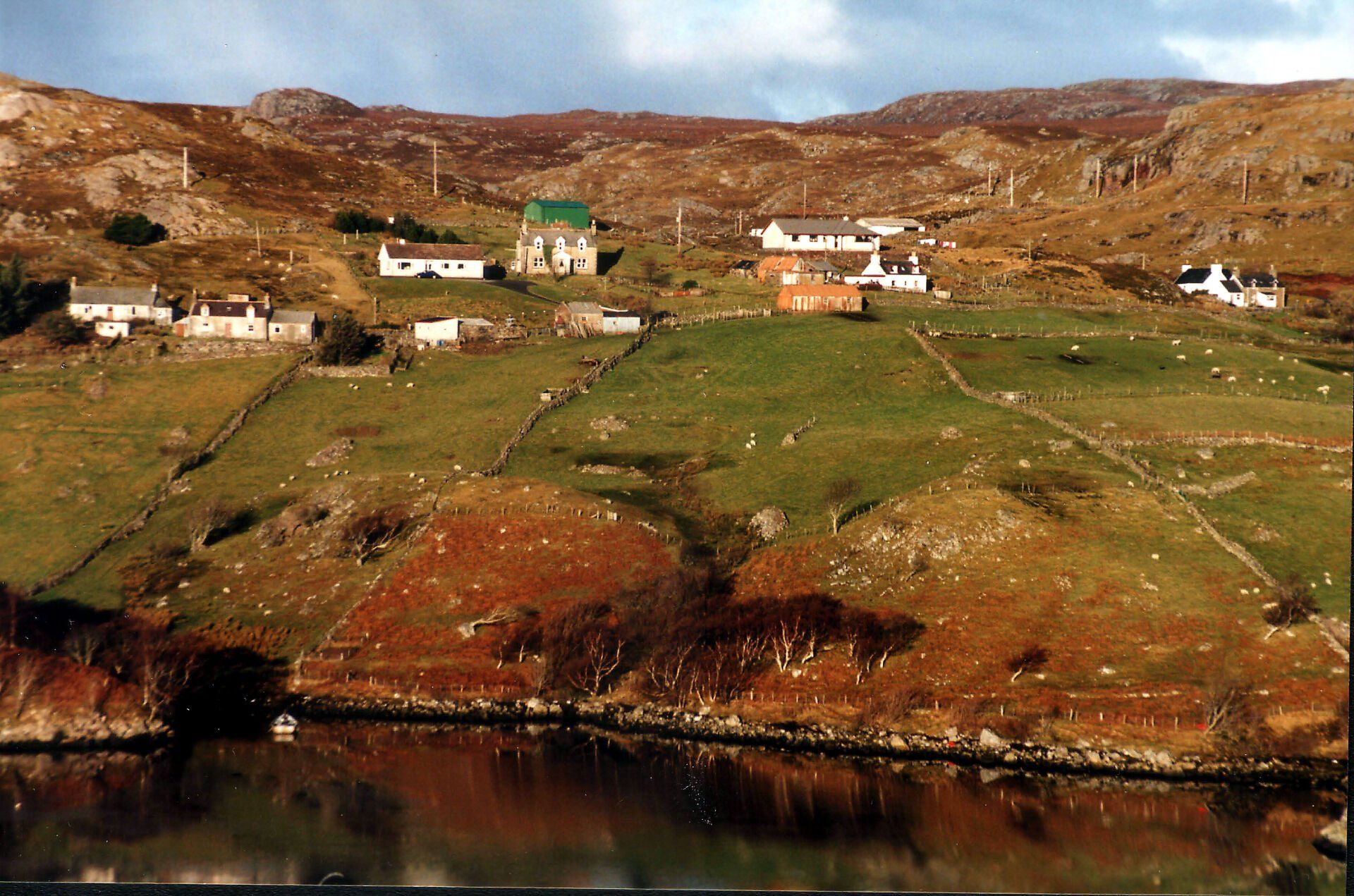Local History
Links
The Kinlochbervie area has a long settlement history going back to prehistoric times as evidenced by shell middens and hut circles. Traditionally the area was part of MacKay territory into which Morrisons from the Hebrides moved around 400 years ago. There has also been significant Norse influence. Originally people settled in the coastal area of Aisir (Oldshoremore) where the best land was. You can still see many croft houses there today with thick stone walls although they now have slate roofs rather than thatched ones.
The population greatly increased in 1819-20 when inland areas of Strathnaver were cleared of their tenants to make way for sheep in the process known as the "Highland Clearnaces". Those who were dispossessed settled particularly along the shores of Loch Inchard. The linear division of crofts running down to the loch side can still be seen in settlements like Achriesgill and Achlyness.
To meet the religious needs of the growing population, the Kinlochbervie Parliamentary Church and adjacent manse were erected in 1829. Both were designed by Thomas Telford. The Kinlochbervie Free Presbyterian Church is still in use today and is located on the road to the main harbour. Next door is the ruins of the Parliamentary Manse. Both are listed historical buildings.
In 1846, the area experienced an outbreak of potato disease. In order to alleviate the poverty, roads were built in the area as "make work" projects that would also provide needed infrastructure. The road between Lairg and Laxford was completed in 1851 and is one of these "destitution roads".
The famine was followed by a period of population decline when people were encouraged to emigrate and their land given over to sheep. Census statistics show that the population is 1851 was almost 1,000; ten years later it had decreased by around 15%. Many ruined houses are still visible today, particularly along the coast from Kinlochbervie to Sheigra.
The landscape of Kinlochbervie and the surrounding area is defined by crofting - a type of agriculture that has been practised for generation. It is characterised by small landholdings, scattered croft houses and shared areas of common grazing. The crofting economy was also supported by fishing which met local needs.
Crofting and emigration remained the pattern for the community until the rise of a substantial fishing industry during the 20th century. A busy harbour existed at Loch Clash until the 1970s when it was replaced by the modern harbour at Loch Inchard.




